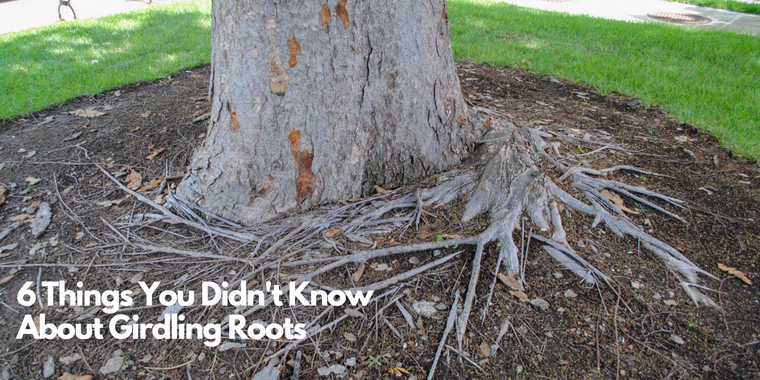
If you’re planning on planting a tree in your yard, it might be helpful to learn more about what you’re getting into. If you haven’t learned about girdling roots, here are six facts you might find surprising about this common problem in trees.
When one of these roots encircles the entire root system of the tree, it can completely stop water and nutrients from reaching the rest of the tree, which can lead to an unhealthy or even dead tree. Fortunately, there are ways to cut through girdling roots and save your tree before it’s too late!
Click Here & Get up to 3 Quotes for Tree Care
1) What is a girdling root?
If you look closely at a tree's roots, you may notice some strange rings. These rings are actually pockets of dead tissue that form due to girdling roots. Sometimes referred to as root collars, these growths prevent water and nutrients from reaching parts of your tree's root system.
This can stunt your plant and may even cause it to die off completely if it becomes too severe. In order for girdling roots to form, your tree must be planted in clay-heavy soil or in the soggy ground; its roots begin growing too deep and cut off circulation between them.
Once formed, girding roots are impossible to remove on their own; you'll need to dig up your entire tree and prune back any portions affected by them.
2) What does it look like?
This looks like a stem that grows and twists into itself, or in other words, forms a circle. This often happens when trees are planted too closely together or are growing on top of another tree. If left unchecked, girdling roots can quickly kill a tree.
They cut off oxygen from the leaves and stems, which prevents photosynthesis and eventually kills them. Girdling roots can also prevent trees from absorbing nutrients through their roots.
Now you know why it's important to keep your trees at least 6 feet apart! That said, if your tree has girdling roots already in place, don’t panic: there is some hope for it!
3) Is there any way I can tell if I have them?
A girdling root occurs when a plant's main or lateral roots become encircled by soil and begin to grow in a circle, thereby cutting off other root systems from water and nutrients.
It’s a common problem for vegetable gardeners, especially those growing squash, which are easily affected by girdling roots because of their large size.
However, it’s important to understand that just because you see girdled roots doesn’t mean they actually have caused damage yet; they are not harmful as long as they are in an early stage.
The trick is being able to spot them before it is too late—not easy! Below you will find helpful tips on how to tell if your plant has been affected by girdling roots.
4) Can you treat girdling roots without digging?
While some trees do respond to treatments, many do not. A tree may be able to survive a girdle; however, it may never reach its full potential in size and growth. If you are considering treating girdled roots by digging around them, there are several things you should consider:
When is digging appropriate? What is considered treatment? When is digging unnecessary? Unfortunately, there’s no easy answer here; treat every situation as unique and research accordingly before acting.
Anatomy of a Girdle The anatomy of a typical plant root system is relatively simple. Most plants have one primary root coming out of their buds (or above ground) that travels down into the soil where it splits into other roots that go out from there.
These secondary, tertiary, etc., eventually come back together at nodes where nodes carry water up from below ground to keep your plant growing strong.
5) Am I able to plant over them again?
If you know you’re going to be girdling roots, it’s important to make sure your ground is fertile enough for regrowth. The easiest way to tell if it is? If there are still plants living in that spot. If so, then your ground has retained a good deal of its nutrients and should be able to support new growth.
However, if you have previously harvested from that area or know of nutrient drainage issues (due to lack of cover over time) then your soil may not have retained all of its nutrients and simply growing over them again will not be enough to sustain regrowth.
In those cases, it’s best to start fresh with new transplants instead of resurrecting old ones.
6) How can I prevent girdling roots in the future?
While girdling roots are a serious problem, there are some preventative measures you can take in order to ensure your tree or shrub doesn’t become susceptible to them. First and foremost, make sure your plant is planted in good quality soil that drains well.
If your plants aren’t getting enough water or their roots are sitting in stagnant water for too long, it may be hard for oxygen to get to their root system. This can result in girdling roots and can be prevented by planting in an area with good drainage and proper watering practices.
1. Register your company
2. Create a searchable listing
3. Connect with more clients
